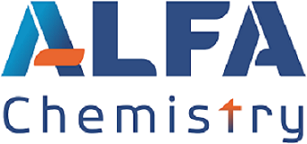| Alfa Chemistry | |
|---|---|
| Country: | United States |
| Tel: | 5166625404 |
| E-mail: | support@alfa-chemistry.com |
| QQ: | |
| Skype: | Chat Now! |
Why Is It Important to Distinguish Between Moisturizers and Emollients?
Release time: 2025-02-22
Generally speaking, moisturizers are a general term for moisturizing and emollient skin care products. When popularizing moisturizing products, even in some professional literature, moisturizers and emollients are used interchangeably as a general term for moisturizing and emollient products.
In fact, according to the different mechanisms of action of moisturizing ingredients, moisturizers are divided into:
- Occlusives
- Humectants
- Emollients
At this point, you may find out why it is so important to clarify the concept. When you see the word emollient, does it refer to the general term for moisturizing and emollient skin care products, or is it one of the three types of moisturizers? As an expert supplier of cosmetic formulations, Alfa Chemistry is committed to helping you clarify the relationship between the two.
01Mechanisms and Types of Occlusives

These substances form a hydrophobic barrier on the surface of the skin to prevent transepidermal water loss (TEWL). Occlusives are usually oily substances, and their sources include animals, plants, minerals and synthetics.
- Animal occlusives: such as lanolin, beeswax, squalane, etc.
- Plant occlusives: such as olive oil, coconut oil, jojoba oil, carnauba wax, candelilla wax, etc.
- Mineral occlusives: such as vaseline, paraffin oil, mineral oil, etc.
- Silicone occlusives: such as dimethicone, cyclomethicone, etc.
- Other occlusives: There are also cetyl alcohol, stearic acid or their fatty alcohol forms, and others include ceramides, phospholipids, sterols, etc.
Occlusive Formula Tips
Occlusive agents are widely used in anti-allergic, repair and sunscreen products in skin care products because they can effectively protect the skin from damage by the external environment. However, for people with sensitive skin or acne problems, occlusive ingredients are also a double-edged sword because they may cause skin hypoxia or bacterial infection, thereby aggravating skin problems.
Mechanisms and Types of Humectants
These hygroscopic substances attract water from the dermis (lower skin layer) and the surrounding environment, drawing it into the stratum corneum. Due to the strong promotion in the cosmetics industry in recent years, hygroscopic ingredients may be the ingredients you are most familiar with, such as:
Hyaluronic Acid: Known for its exceptional water-holding capacity, it can attract and retain a significant amount of moisture.
Glycerin: A highly effective humectant that draws water from the air and the deeper layers of the skin.
Urea: In addition to its moisturizing properties, urea also helps to exfoliate the skin.
Panthenol (Vitamin B5): A humectant that also promotes skin healing and reduces inflammation.
Sodium pyrrolidone carboxylate (Sodium PCA): A natural moisturizing factor (NMF) found in the skin, it helps to maintain optimal hydration levels.
Propylene Glycol: A versatile humectant that also acts as a solvent and a penetration enhancer.
Sodium Lactate: Another NMF that helps to regulate skin pH and improve hydration.
Sorbitol: A sugar alcohol that attracts and retains moisture, providing long-lasting hydration.
Gelatin: A protein-based humectant that also helps to improve skin texture and firmness.

